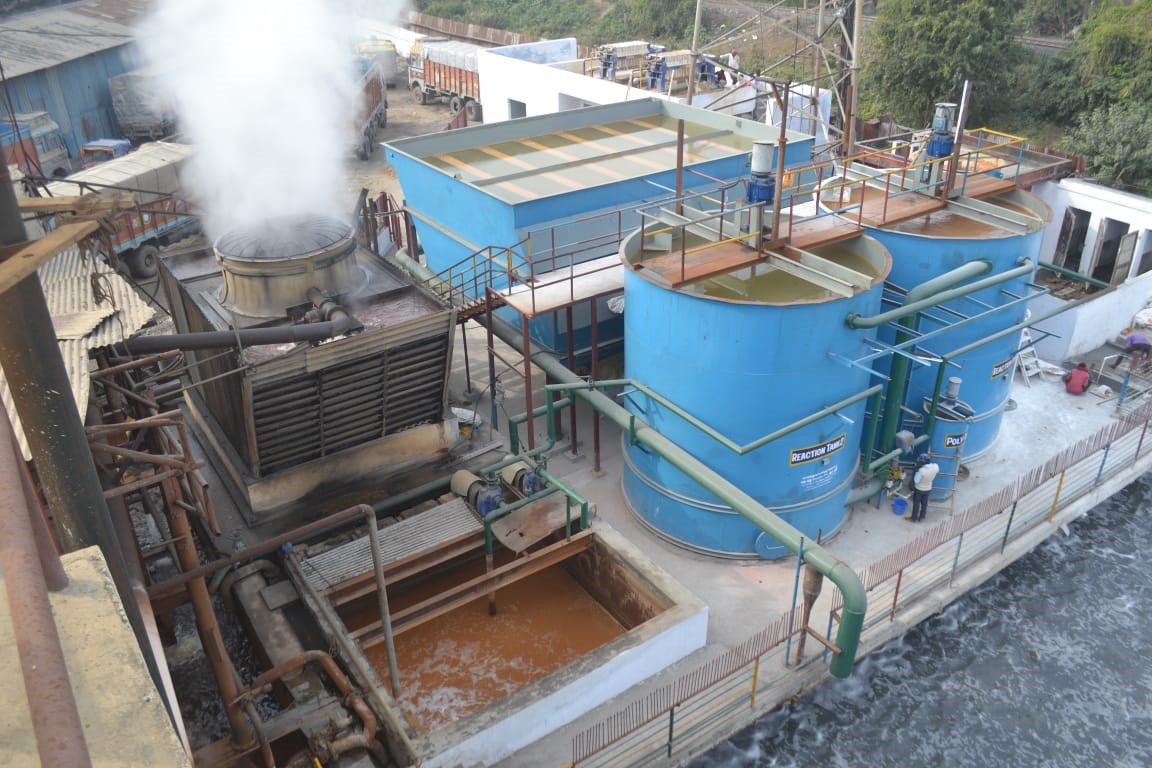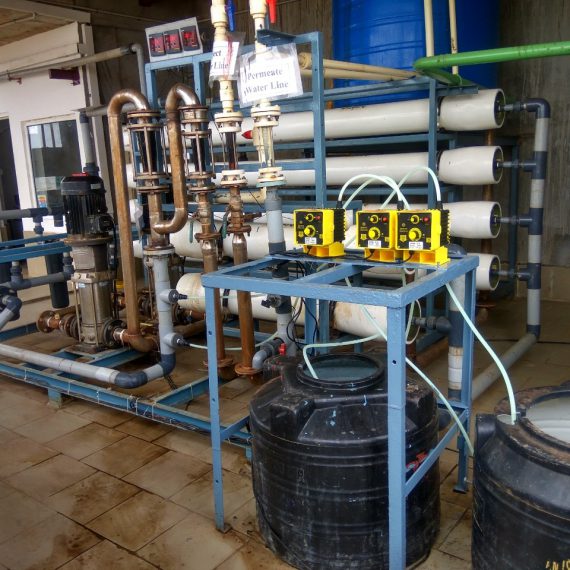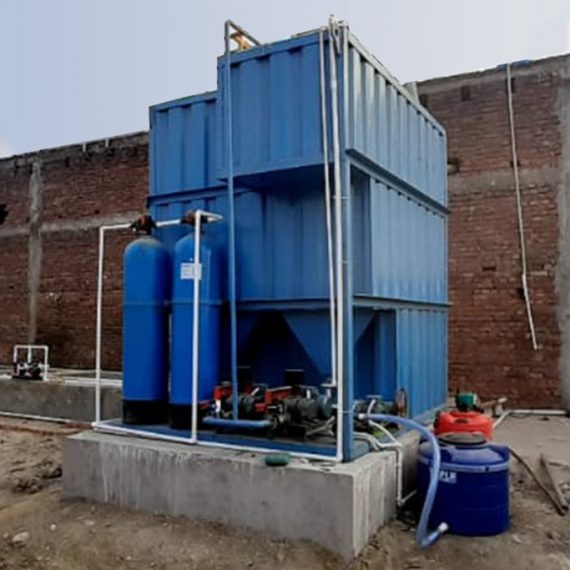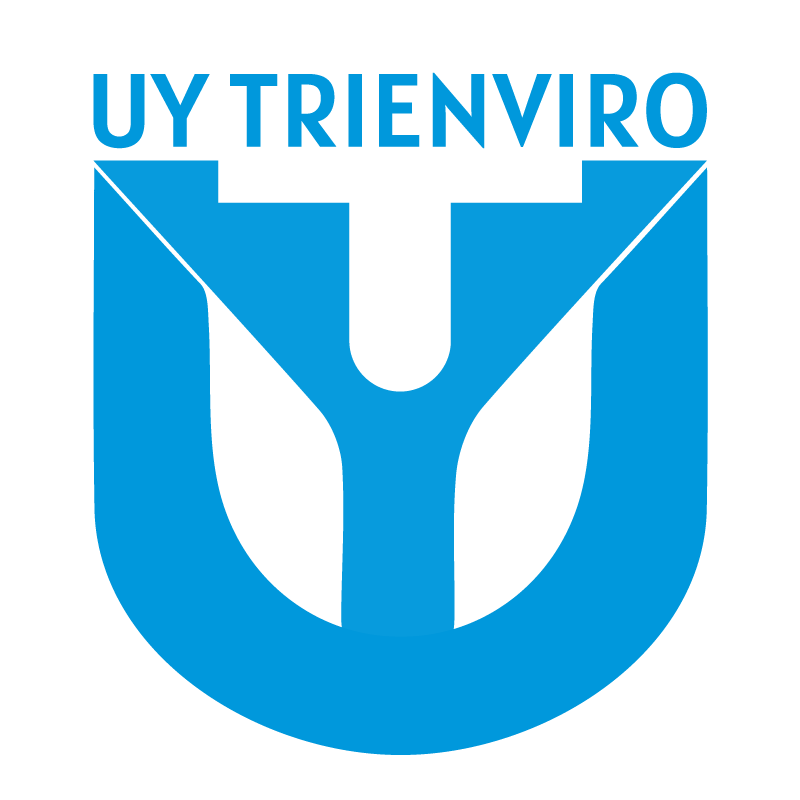- Water is one of the most important components used in all types of industries. It is used in many processes of Industry. It may be used for washing, heat exchanging, condensing steam, cooling, etc. But water used in industry is not fit for consumption. Hence, almost all the industries that generate wastewater need serious treatment before disposal, as the improper discharge of wastewater can pollute the environment.

An Effluent Treatment Plant, also known as ETP is a wastewater treatment machinery that is used to treat wastewater. It’s mostly used in industries like dairies, sugar mills, tanneries, pharmaceuticals, textiles, electroplating etc., where extreme water contamination is present. An ETP plays a significant role in the treatment of industrial wastewater as well as domestic sewage. Organic matter, heavy metals, inorganic matter, suspended particles, oil & grease, and other contaminants are treated in the wastewater treatment process. The processes used are Physio-chemical treatment, biological treatment and a combination of chemical and biological treatment, are used in the treatment of wastewater.

What are parts and processes in an ETP?
1) Storage Tank- The function of the storage tank is to collect and store the raw effluent from different parts of the factory.
Process: The raw effluent is collected from the different parts of the factory and stored. From the storage tank, the raw effluent is passed to the equalization tank with the help of a pump. The pH of the raw effluent in the storage tank is 5.5 – 6.5.
2) Equalization Tank – The function of the equalization tank is to equalize the raw effluent emanating from different processing units.
Process: The effluent is collected in an existing combined effluent from where it is pumped to the current aeration tank, which helps as an equalization tank. The floating aerator is operated to homogenize effluent which is then pumped into the neutralization tank.
3) Neutralization Tank- The purpose of the neutralization tank is to neutralize the raw effluent, which is normally acidic in nature.
Process: The raw effluent, which is usually acidic (pH-5.5 to 6.5) in nature, is neutralized by adding the saturated solution of NaOH, So, the final pH of the neutralization tank is adjusted to pH- 8.0 to 9.0. Then the raw effluent after has been treated in the neutralization tank is allowed to pass in the primary clarifier through gravity.
4) Primary Clarifier – The function of the PC is to remove suspended heavy particles from the raw effluent.
Process: In this tank, the heavy particles along with the sludge, which the bacteria have degraded, settle down at the bottom of the tank and the water flows on top of it. A rotator is fixed in the middle of the tank so that the heavy particle along with the sludge which has settled down does not block the outlet of the PC. In this tank, mostly the inactive heavy particles along with the little amount of sludge are thrown out in the Sludge drying beds. The pH of the PC is maintained at 7.0 to 8.0.
5) Anaerobic Hybrid Reactor – This unit is provided for the anaerobic treatment of effluent.
Process – The effluent after treatment in PC is passed to the AHR through gravity. The design of the AHR is a way that at the bottom of this tank, anaerobic bacteria beds are made. The effluent which comes from PC reacts with the anaerobic bacteria and the breakup of organic compounds takes place with the production of Methane gas which can be seen in the form of bubbles on the upper layer of the water in the tank. The pH of the AHR is maintained at 7.0-7.5 because the anaerobic bacteria are stable at this pH. If there is much fluctuation in the pH of this tank the anaerobic bacteria can die.
6) Aeration Tanks 1 & 2 – This unit is delivered for aerobic biological treatment of the effluent for the decrease of organic matter in the effluent.
Process: The effluent from the AHR is received in the aeration tank stage-1 by pumping and is aerated with the help of mechanical surface aerators in the presence of previously developed biological sludge (Mixed Liquor Suspended Solids i.e. MLSS). The food/microorganism ratio is maintained at about 0.6 and 0.137 in the first and second-stage aeration tanks respectively which correspond to about 3500 mg/ml.
Operation – The start-up of the activated sludge process can be accomplished by using seed sludge available from night soil to develop a suitable microorganism population expressed as MLSS.
How does ETP Plant Work?
The conceptual approach of the treatment includes the removal of suspended particles, and dissolved organic matter, and the handling of sludge for disposal. Different processes involved are:
EQUALISATION: The equalization tank’s resolution is to balance the raw effluent from various processing units. The wastewater is collected in a current mixed effluent tank and pumped to an existing aeration tank, which also meanings as an equalization tank. The floating aerator is used to homogenize the effluent before it is pumped into the neutralization tank for treatment.
pH CONTROL: The pH value of effluent must be between 5.5 and 9.0, according to the Bureau of Indian Standards (BIS).pH neutralization is used to adjust the pH of the wastewater.
For waste that is acidic (low pH), Bases are used to adjust the pH of a solution.
In the case of alkali waste (high pH): Acids are used to adjust the pH of a solution.
COAGULATION: Coagulation is a technique that involves adding liquid aluminum sulfate to untreated water. This causes little dirt particles to switch together after mixing. This collection of elements combines to generate larger, heavier particles that are simply removed over settling and filtration.
SEDIMENTATION: Water actions slowly in this process, causing the heavy elements to settle to the bottom. Sludge is the term for the elements that gather at the bottom of a container.
FILTRATION: Filtration is the procedure of passing water through a filter that eliminates particulates. The filters are made out of sand and gravel covers. Backwashing is required to clean these filters on a consistent basis.
DISINFECTION: Before incoming the distribution system, water is disinfected. Chlorine is recycled to disinfect and decontaminate water.
SLUDGE DRYING: Sedimentation gathers and settles down solids, which are then elated to drying beds. When the mud thickness reaches around 300 mm, the mud charging should be stopped, and the bed should be segregated to permit natural evaporation to dry it off. This proceeds for approximately ten days.

Benefits of ETP:
- Effluent is treated for reuse, which means fresh water is saved.
- To preserve the natural environment against pollution.
- To meet the standards for the emission of pollutants set by the Government & avoid heavy penalties.
- To reduce expenditure on water acquisition.
- An ETP can make the planet better for our future generations. 🙂
How to select a good EPC Company for your Effluent Treatment Plants requirements?
A good Engineering, Procurement & Construction Company always looks forward to provide a sustainable, economic and efficient solution to its clients. There are many ways by which you can identify a good EPC company:
- Ask the company for its’ referrals. A good EPC company will never hesitate to share it’s referrals with a customer. You will get a good idea about the company’s performance by looking at its’ clients. A good EPC is bound to attract good clients. You can also cross-check about their performance with the other clients. UY Trienviro never hesitates to share such details. We always believe in transparency.
- Are they providing new technologies? All the good wastewater management companies provide solutions that help you in saving the CAPEX & OPEX with the use of new technologies. As a buyer, you need to ask them the technologies they are using in order to get the best. UY Trienviro is an industry leader of technology use in its solution. It’s our primary focus to provide our clients with award winning solutions.
- What experience do they hold in the industry? It is always advisable to work with new experienced company. As a buyer, you should always check the key-personnel behind the company as ultimately, your ETP will be installed under their guidance. UY Trienviro is backed by technocrats having more then 30 years of experience in the field of wastewater management.
UY Trienviro is always ready with solutions whatever the wastewater problems maybe.
For any doubt or product inquiries, please feel free to reach us.
We can be reached at +91 9336 771313,
or
feel free to leave your query at this link
or
drop an email at info@uytrienviro.com.


